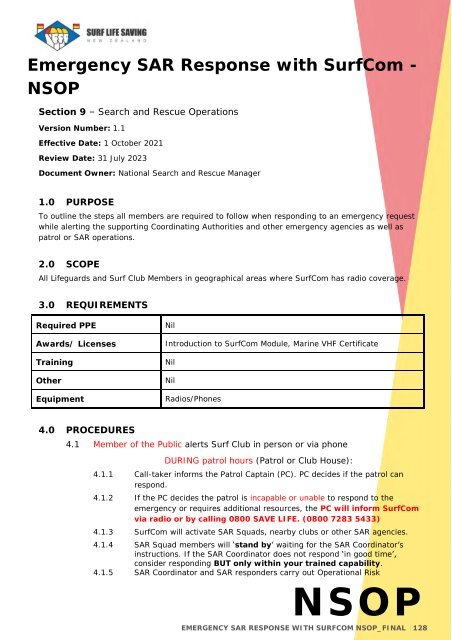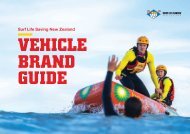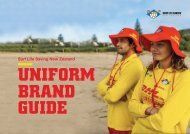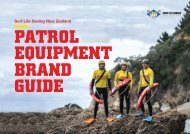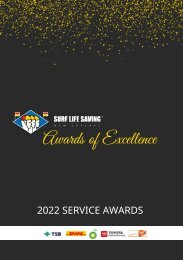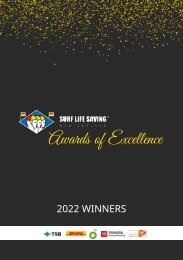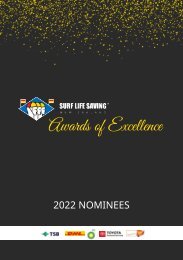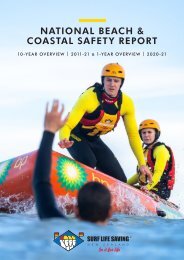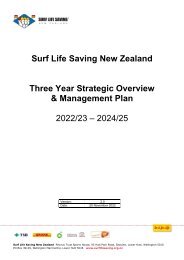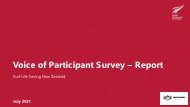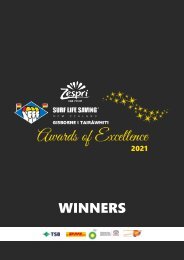National Standard Operating Procedures - Jul 2022
Full NSOP Manual
Full NSOP Manual
Create successful ePaper yourself
Turn your PDF publications into a flip-book with our unique Google optimized e-Paper software.
equired.<br />
4.1.2.2 Mucous membrane exposure (e.g., mouth, eyes etc.): Irrigate<br />
under running water.<br />
4.1.3 Complete a risk assessment with the relevant Duty Officer or staff member<br />
(below) and make note of this on the Incident Form.<br />
Risk assessment<br />
The risk of HIV infection after needle stick injuries or splash exposure is minimal, however any<br />
exposure does pose a risk that needs to be assessed. The assessment below is based on St John New<br />
Zealand and NSW Health guidelines.<br />
Level of Risk Injury/Exposure Type Bodily Fluid Type<br />
Nil-Low Risk ● Skin not broken<br />
●<br />
Injury from clean needle or sharp<br />
(not yet used on a patient)<br />
●<br />
Mucosal Secretions (e.g., saliva, sputum,<br />
nasal secretions).<br />
Low Risk ● Superficial injury<br />
● Mucosal exposure<br />
● No visible blood on sharps<br />
●<br />
●<br />
Body fluids that do not contain blood<br />
Vomit<br />
High Risk ● Deep percutaneous injury<br />
●<br />
Visible blood on sharps<br />
●<br />
●<br />
●<br />
Blood<br />
Body fluids that are visibly bloody<br />
Patient with known blood borne disease<br />
4.2 Post Exposure Blood tests<br />
If required, use the SLSNZ Laboratory Blood Test Request Form and complete a blood<br />
test within 24 hours. The blood test will check: Hepatitis B Antibodies, Hepatitis B<br />
Antigen, Hepatitis C Screening, HIV status. Antibodies are usually found within 6-12<br />
weeks following infection. Subsequent tests should be carried out 3 months and 6<br />
months after injury/exposure.<br />
4.3 Post-Incident support services<br />
These should be made available to the member and records kept of when these were<br />
offered. A follow up check with the affected member/s should be scheduled by the<br />
relevant peer support service and SLSNZ representative to ensure the intended<br />
support is available and meeting the intended needs.<br />
4.4 Equipment Exposure Decontamination<br />
Disinfectants must be used on all contaminated equipment following the<br />
manufacturer's recommendations for use. Some equipment will require spraying down<br />
with a nap sack sprayer, while others will need to be soaked. Ensure PPE is worn<br />
when decontaminating equipment and buildings.<br />
4.4.1 IRB Decontamination:<br />
NSOP<br />
BLOOD & BODILY FLUID EXPOSURE NSOP_FINAL 121


